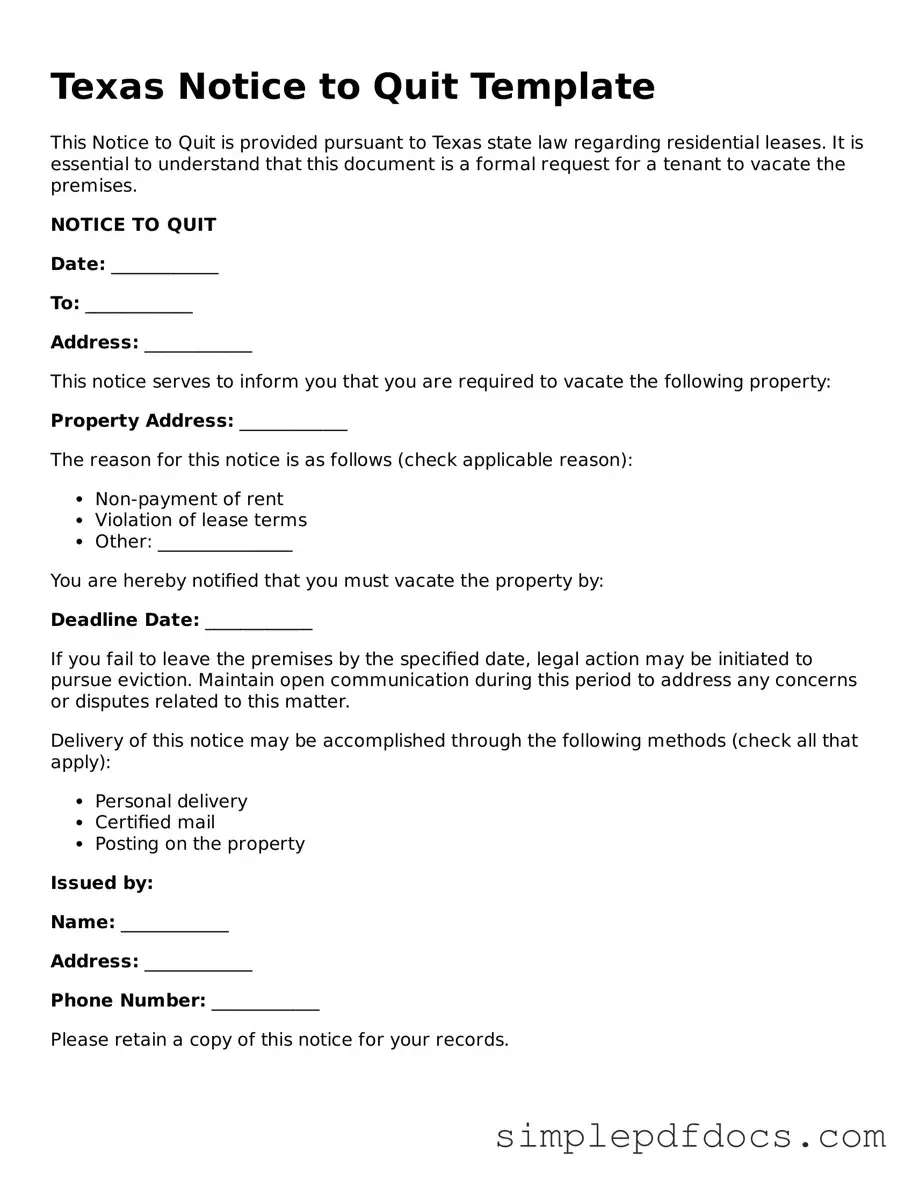In Texas, the Notice to Quit form serves as a crucial legal document in the landlord-tenant relationship, particularly when it comes to addressing issues related to lease violations or non-payment of rent. This form is typically the first step a landlord takes when seeking to regain possession of their property. It outlines the specific reasons for the eviction and provides tenants with a clear timeline to either rectify the situation or vacate the premises. Understanding the importance of this document is essential for both landlords and tenants alike, as it establishes the groundwork for any potential legal proceedings. A properly executed Notice to Quit can help prevent misunderstandings and disputes, ensuring that both parties are aware of their rights and responsibilities. Timely delivery of this notice is also vital, as it can impact the outcome of any future legal actions. Therefore, knowing how to fill out and serve this form correctly is imperative for landlords looking to protect their investments and for tenants wanting to respond appropriately to eviction notices.
